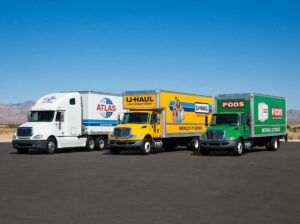A Certificate of Insurance, or COI, is a one-page summary that proves a moving company carries the insurance that a building or property manager wants to see before trucks, crews, and equipment come on site. Apartment and office buildings ask for it to confirm liability limits, workers’ compensation, and other protections, so elevators, lobbies, and loading areas are covered if something goes wrong. The COI does not replace your own coverage for household goods; it sits alongside it and speaks to the building’s risk.
Key Points
- A COI is typically an ACORD 25 form issued by the mover’s insurance agent that lists the building as the certificate holder and, often, as an additional insured for the move date.
- Buildings specify limits and clauses like general liability, automobile liability, workers’ compensation, umbrella, waiver of subrogation, and “primary & noncontributory” wording are common requests.
- The COI protects the building’s interests. It is separate from household-goods valuation (the coverage that addresses your belongings).
- Most movers can generate a tailored COI within one business day once they have the building’s exact requirements and the correct certificate-holder details.
- Elevator reservations, loading-dock windows, and street permits often travel in the same conversation as the COI, especially in dense metros.
What a Certificate of Insurance Covers and Why Buildings Ask for It
The COI shows that a mover carries active insurance and that the limits meet the building’s minimums. Property managers rely on it because move day introduces extra wear on lobbies and elevators, more traffic at the curb, and heavier-than-usual equipment. The document is not itself an insurance policy; it summarizes the mover’s policies and names the building that wants proof. For many buildings, the COI is a prerequisite to scheduling the freight elevator or opening the loading bay.
What You’ll See on a Moving COI
| Line | What It Means | Typical Building Request |
|---|---|---|
| Certificate Holder | The party receiving proof of coverage (usually building or management company). | Exact legal name and address of property manager or HOA, plus property address. |
| Additional Insured | Extends the mover’s liability coverage to the building for the event. | Building and management company listed as additional insured with date-specific wording. |
| General Liability | Covers third-party injury or property damage in common areas. | Often $1,000,000 per occurrence; some towers request $2,000,000 or an umbrella. |
| Automobile Liability | Covers the moving truck and any vehicle-related incidents. | Frequently $1,000,000 combined single limit (CSL). |
| Workers’ Compensation | State-mandated coverage for employee injuries. | Statutory limits with Employers’ Liability (e.g., $500,000 / $500,000 / $500,000 or higher). |
| Umbrella / Excess | Adds limits above primary policies. | $1 – 5M is common in high-rise or Class A buildings. |
| Special Wording | Clauses some buildings require in the description box. | “Waiver of Subrogation,” “Primary & Noncontributory,” named additional insureds, specific move date and address. |
COI vs. Valuation: Different Problems, Different Documents
The COI speaks to the building’s risk. Household-goods valuation (sometimes called released value or Full Value Protection in interstate moves) speaks to your things. If a lobby wall is scuffed, the building looks to the mover’s liability policies shown on the COI. If a table leg is damaged in transit, the remedy usually comes from the valuation coverage you selected in your moving paperwork. The two concepts work together rather than compete.
How a Certificate of Insurance Is Issued and Shared
Once a move date is set, the mover’s office asks for the building’s COI requirements. Those requirements often live in a resident handbook or a one-page template that the property manager emails over. The mover forwards that list to its insurance agent, who generates a tailored ACORD certificate with the requested limits, language, and certificate-holder details. The finished COI is sent to the building; sometimes directly from the agent and copied to you so elevator reservations and loading-dock windows can be confirmed. Many buildings prefer receiving the COI at least one business day before the time slot, which keeps the freight schedule predictable for everyone.
Regional Notes (Where COIs Show Up Most Often)
COIs appear everywhere, and they surface more frequently in dense metros and managed communities. High-rise apartments and condos in cities like New York, Boston, Chicago, Miami, and San Francisco often require a COI alongside a freight-elevator booking and, in some cases, proof of a city street permit for the truck. Suburban HOAs ask less often, yet many property managers still want a certificate on file when a loading area or shared road will be used for several hours.
Common Mix-Ups and Easy Clarifications
- Wrong certificate holder. Using the property’s marketing name instead of the management company slows things down. The legal name listed on your building’s request works best.
- Missing additional insured language. Some buildings want to be named explicitly, not just listed as certificate holder. The agent can include that wording when asked up front.
- Limits that don’t match. A tower might require higher general liability or a larger umbrella. Matching the posted minimums avoids last-minute edits.
- Confusing COI with coverage for your items. The certificate proves the mover’s policies; your household-goods valuation still needs to be chosen in the estimate and bill of lading.
Example COI
This sample mirrors the information that typically appears on an ACORD 25 certificate for a household move. Details are illustrative; policy numbers and dates are masked and the exact layout comes from the insurer’s form. It helps as a reference when a property manager asks what they will receive.
| Field on Certificate | Sample Content | Why It’s There |
|---|---|---|
| Producer (Insurance Agent) | Harbor Risk Partners, LLC – 200 Harbor Dr., Suite 400, Boston, MA 02110 | Shows who issued the certificate and who can answer coverage questions. |
| Insured (Moving Company) | Atlas City Movers, Inc. USDOT 1234567 75 Commerce Way, Raleigh, NC 27609 | Identifies the mover whose policies are summarized. |
| General Liability | Policy ABC-GL-000123 – Eff: 04/01/2025 – Exp: 04/01/2026 – Each Occurrence: $1,000,000 – Gen. Aggregate: $2,000,000 | Covers third-party injury or property damage in common areas (lobbies, elevators). |
| Auto Liability | Policy ABC-AL-004567 – CSL: $1,000,000 – Any Auto | Addresses incidents involving the moving truck on-site or at the curb. |
| Workers’ Compensation / Employers’ Liability | Policy ABC-WC-009900 – Statutory – EL: $500,000 / $500,000 / $500,000 | Confirms employee injury coverage during the move. |
| Umbrella / Excess Liability | Policy ABC-UM-007700 – $2,000,000 limit – Follow Form | Adds protection above primary policies; many towers ask for this. |
| Certificate Holder | Riverside Towers Condominium c/o Hanover Management, 300 Riverside Ave., Unit Office, Charlotte, NC 28202 | The building/manager receiving proof of insurance. |
| Additional Insured | Riverside Towers Condominium Association and Hanover Management Company (see Description of Operations) | Extends the mover’s liability coverage to the building for the event. |
| Waivers / Primary & Noncontributory | Waiver of Subrogation & Primary/Noncontributory wording in favor of certificate holder where required by written contract | Common clauses requested by property managers for on-site work. |
| Description of Operations (Sample Wording) | “Certificate issued in favor of Riverside Towers Condominium Association and Hanover Management as Additional Insured with respect to moving services at 300 Riverside Ave., Charlotte, NC 28202 on 07/18/2025. Coverage is Primary & Noncontributory where required by written contract. Waiver of Subrogation applies to GL and Auto.” | Places the exact address, move date, and special language in one visible place. |
A few practical notes often reassure building staff. Policy effective dates should bracket the move date; the certificate holder must reflect the legal management entity and property address; and the additional-insured language should appear either by endorsement reference or in the description box, matching the building’s template. Agents reissue certificates quickly when a property needs wording adjusted, so small edits are routine rather than exceptional.
FAQ
Who pays for the COI?
The certificate itself is a summary document that insurers issue at no charge. If a building requests unusually complex wording or rush handling, a few movers pass along a small administrative fee; most treat it as part of scheduling.
How long does it take to get one?
Insurance agents generate COIs every day. With the building’s template in hand, many are turned around the same day or within one business day, which keeps elevator windows on track.
What if the building changes the required language?
Agents can reissue a revised COI with updated wording. The key is the exact phrasing, copying it from the building’s request prevents back-and-forth near the move date.
Is cargo insurance listed on the COI?
Some certificates show cargo coverage, but not all buildings ask for it. Cargo speaks to goods in transit; buildings usually focus on general liability, auto liability, workers’ compensation, and umbrella limits.
Do single-family homes ever ask for a COI?
Occasionally; especially when a neighborhood HOA manages shared streets or gates. More often, COIs arise in properties with freight elevators, loading docks, or staffed management offices.
References
- ACORD – Certificate of Liability Insurance (Form 25) overview & instructions
- FMCSA – Protect Your Move (consumer rights & moving paperwork)
- OSHA – Employer Responsibilities (context for workers’ compensation)
- NYC Buildings – Moving Safely (building management expectations)
- City of Boston – Moving-truck permits (often requested alongside a COI in managed properties)
COI requirements vary by building and management company. The examples above reflect common requests across major U.S. metros; your property’s written instructions take precedence.








